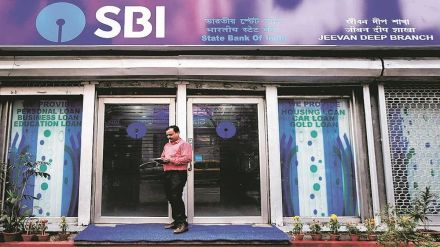State Bank of India’s plea before the Supreme Court (SC) asking for more time to furnish details on electoral bonds to the Election Commission (EC) is somewhat surprising. On February 15, the court had upheld the Indian voter’s right to know details of donors who had subscribed to electoral bonds. As such, the court directed the bank to provide the relevant information—the amount, who had purchased the bonds and to whom the funds were paid to—by March 6. However, just a couple of days before the deadline, SBI asked the court for time until June 30 to furnish these details, citing logistical issues. That’s an inordinately long time and in effect means that voters will not get to learn the identities of the donors until well after the results of the general elections are declared. Thus, the purpose of the SC’s ruling, which is that the public should know who contributed to which political party, would be defeated.
The application before the apex court raises several questions. It is somewhat curious that the country’s premier lending institution took 19 days just to figure out that there were logistical issues in sharing the data. Surely, this realisation should have dawned on it much earlier. Second, SBI’s explanation in paragraph 13 of its application says the KYC (Know Your Customer) details are stored physically. The bank claims this was done to ensure that the data cannot be gathered easily which would help maintain anonymity. The question being asked is was anonymity not possible with digital records? After all, SBI maintains digital KYC records for close to 500 million customers and claims that this data is secure. So why couldn’t the bank maintain digital KYC records for 22,000 bonds?
In these times of highly automated and digitised systems, virtually all data is stored in electronic form. Again, paragraph 10 of SBI’s application says donor details are kept in sealed covers and are transferred to the main branch in Mumbai. Paragraph 11 submits that even at the time when political parties do encash these bonds, the original bonds and the pay-in slips are kept in sealed covers which are sent back to the main branch in Mumbai. This begs the question that if all the documents are in Mumbai, why does SBI need more than four months for reconciling the donor information? In this context, a 2018 finance ministry file noting which came to light following an RTI application by Commodore Lokesh Batra, is pertinent. It appears from the noting that SBI had wanted each electoral bond to be labelled and assigned a unique serial number. This, the lender, felt would help to create an audit trail in the event any information was sought by law enforcement agencies.
In other words, a specific number on each bond would enable easier sourcing of the data; who had issued the bond and who had encashed it. On its part, the finance ministry had allowed such serial numbers. That again raises the question: If the electoral bonds are traceable with the serial numbers, why should it take more than four months for SBI to collate the information? It is thus quite inconceivable that when so much is being talked about ‘Digital India,’ SBI, with its vast network of digitally connected offices, is finding it so difficult to do such a simple job. Indeed, the application for an extension puts leaves many questions unanswered.
